RARE! Original 1916 Battles of Arras British Expeditionary Force (B.E.F.) Battlefield Infantry & Artillery Combat Map
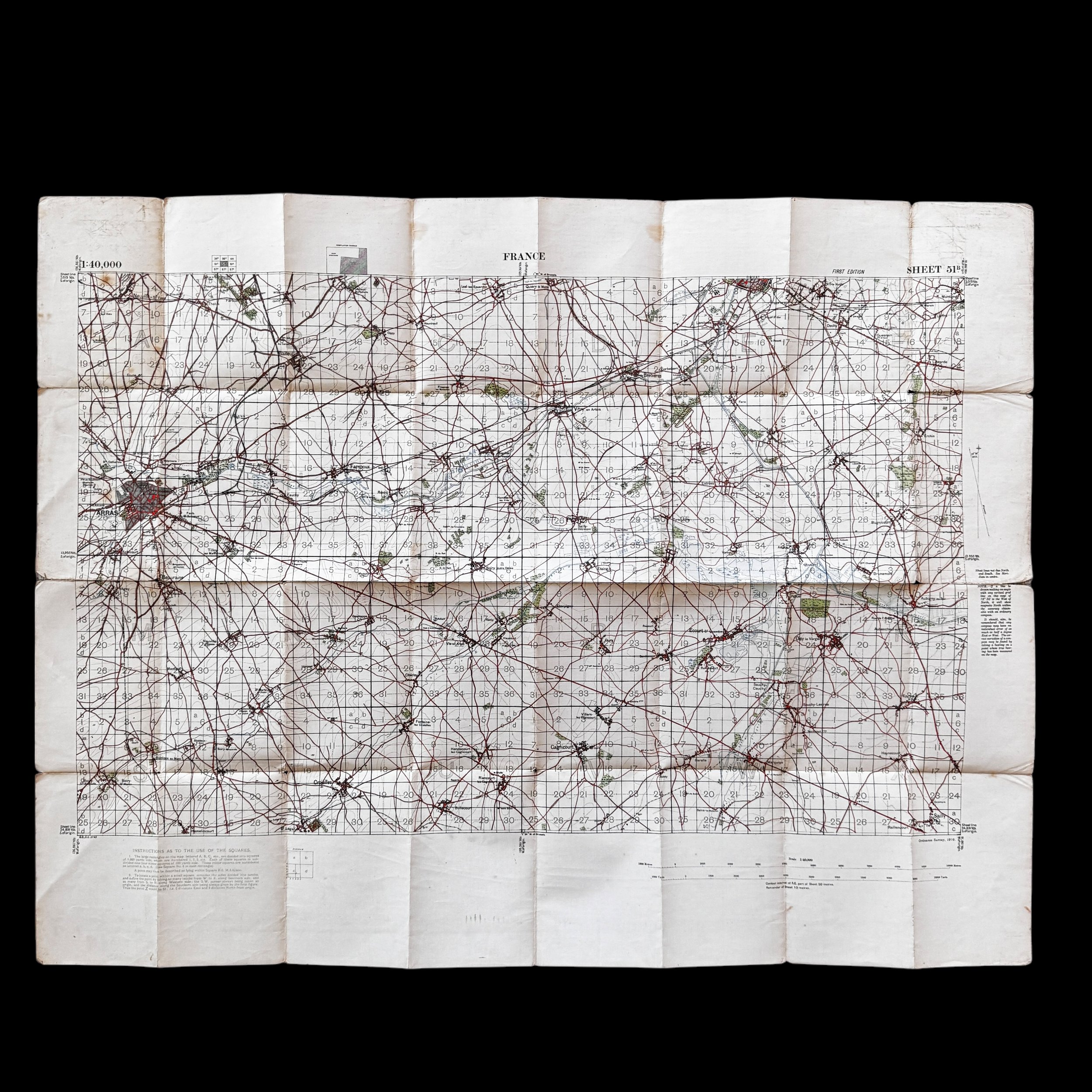
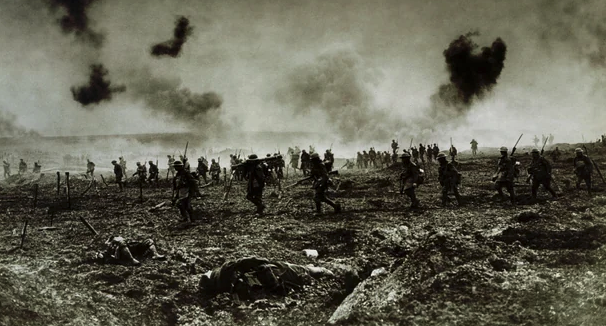
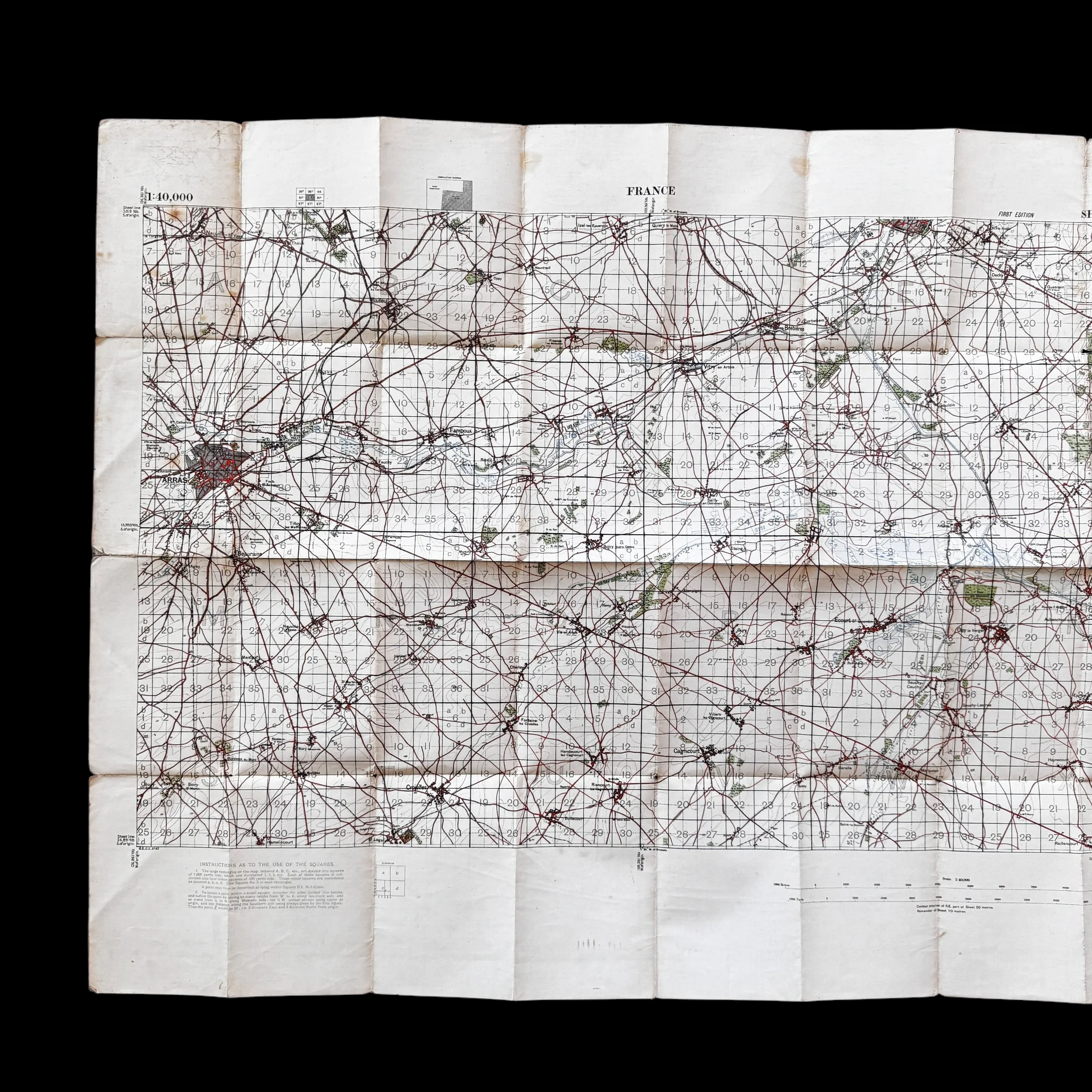
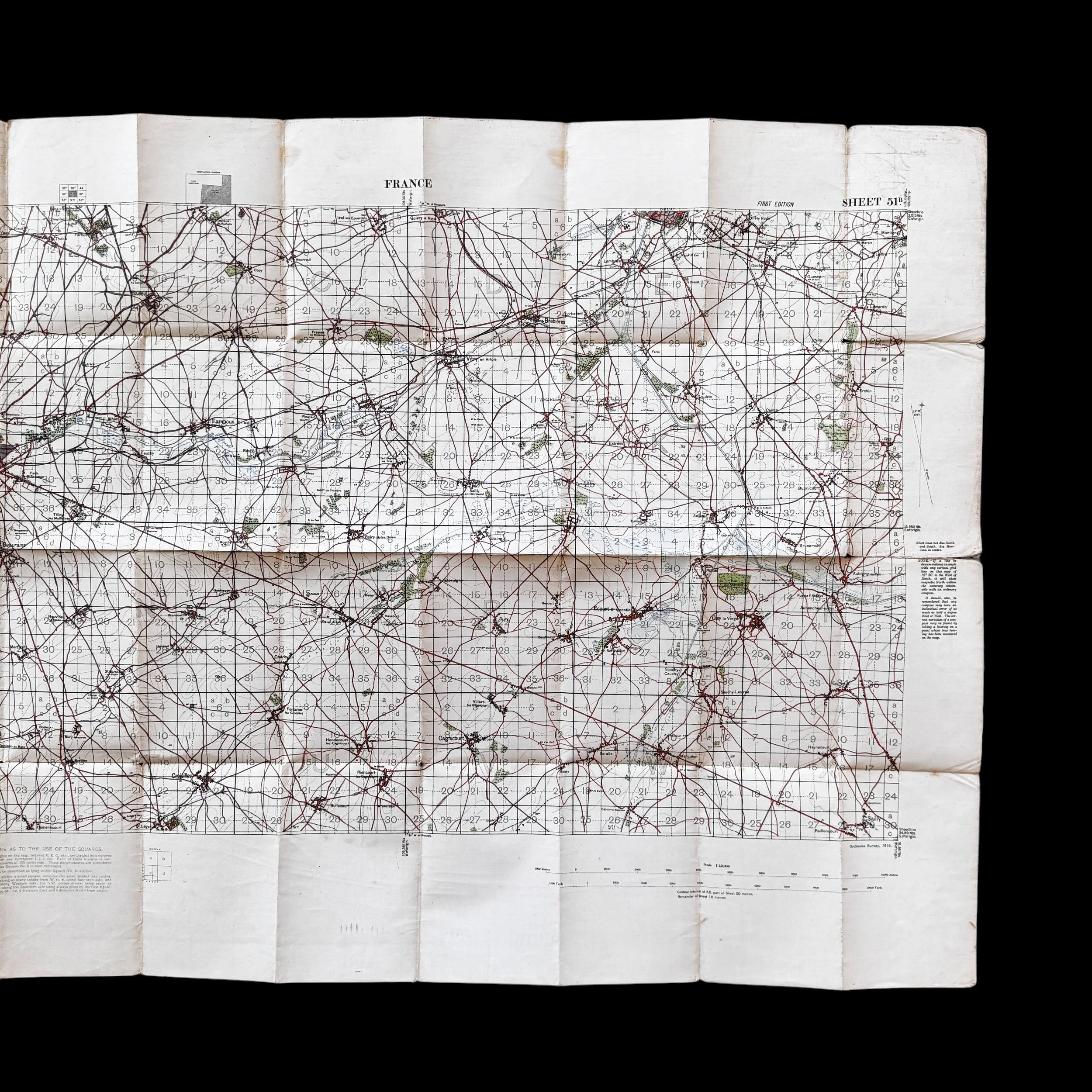
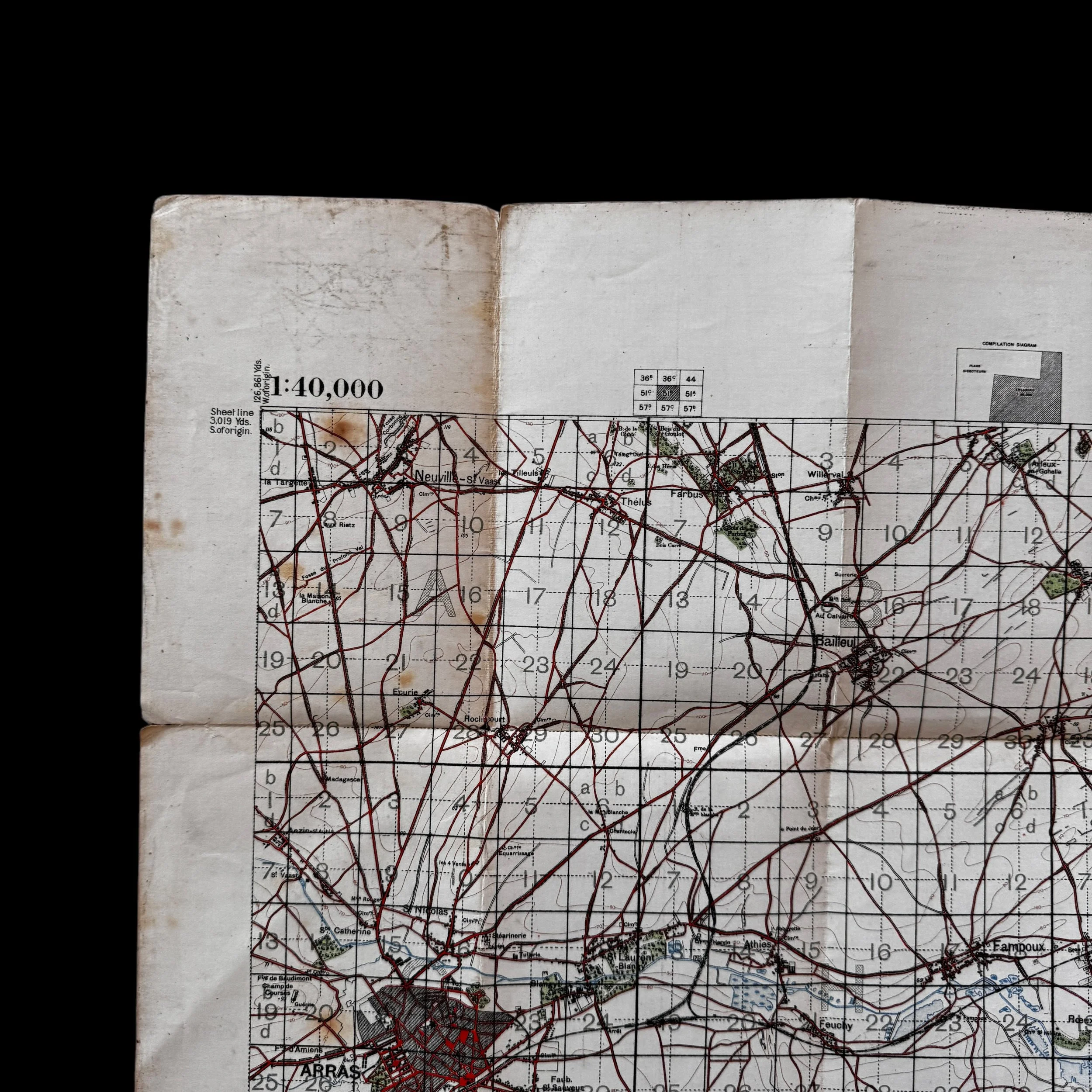
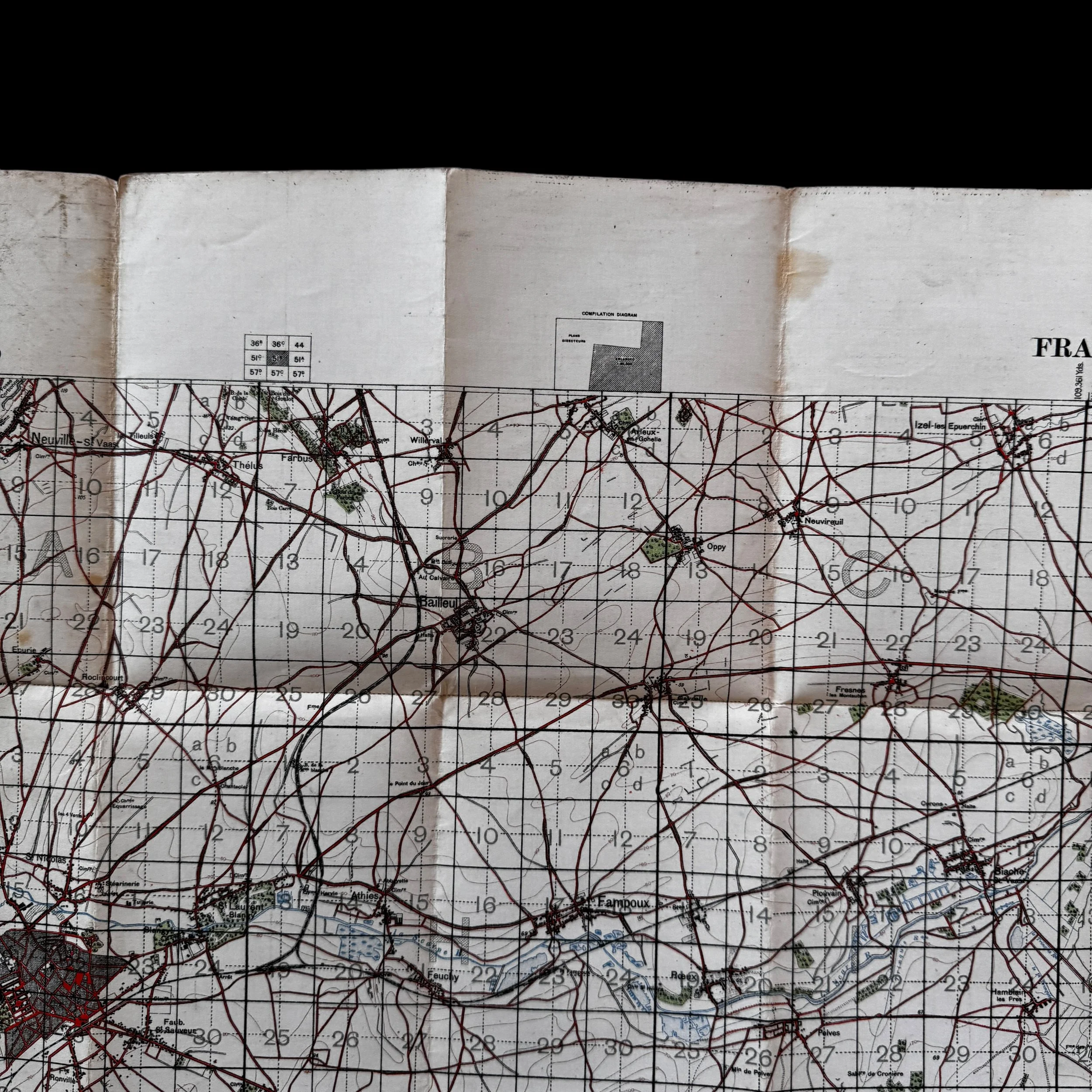

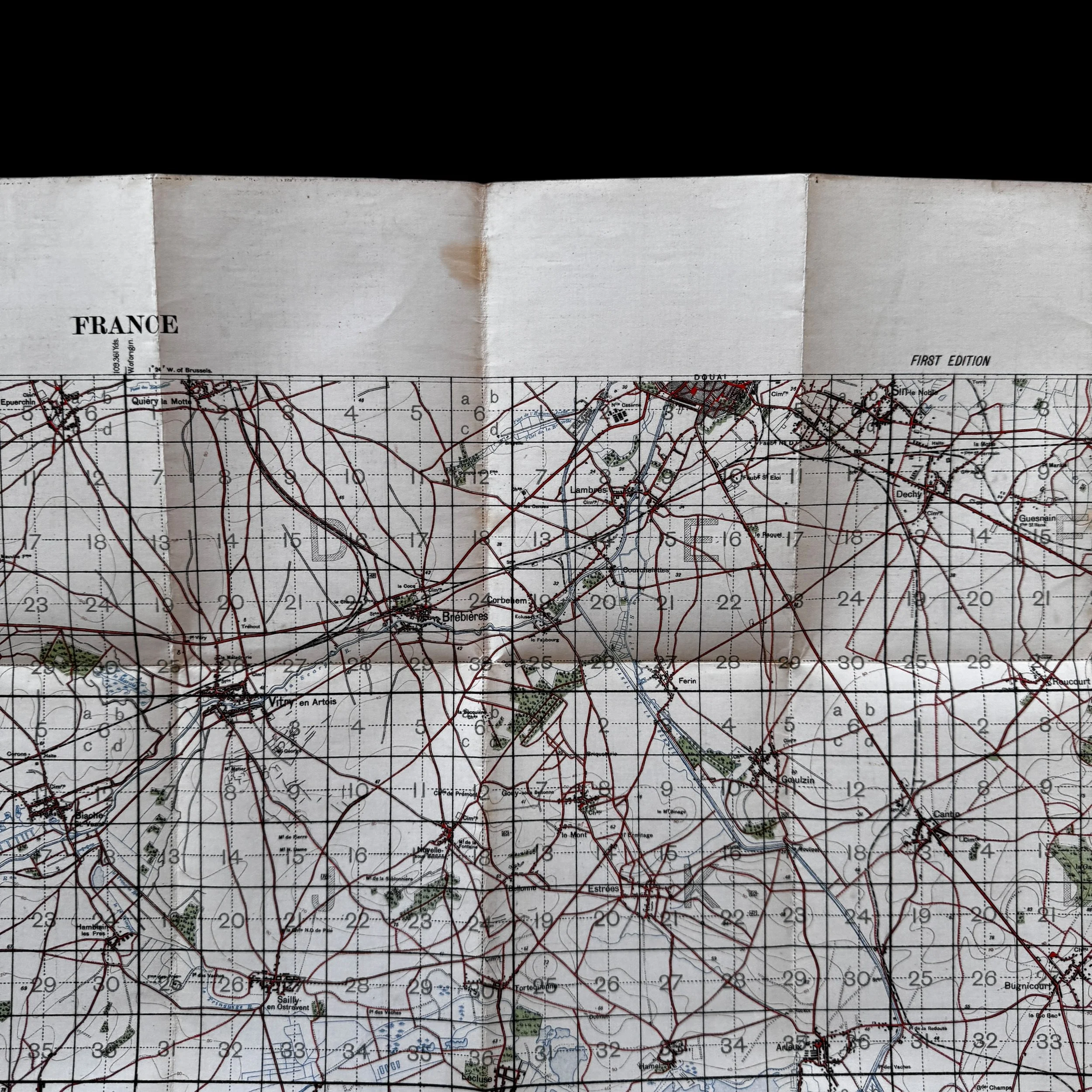
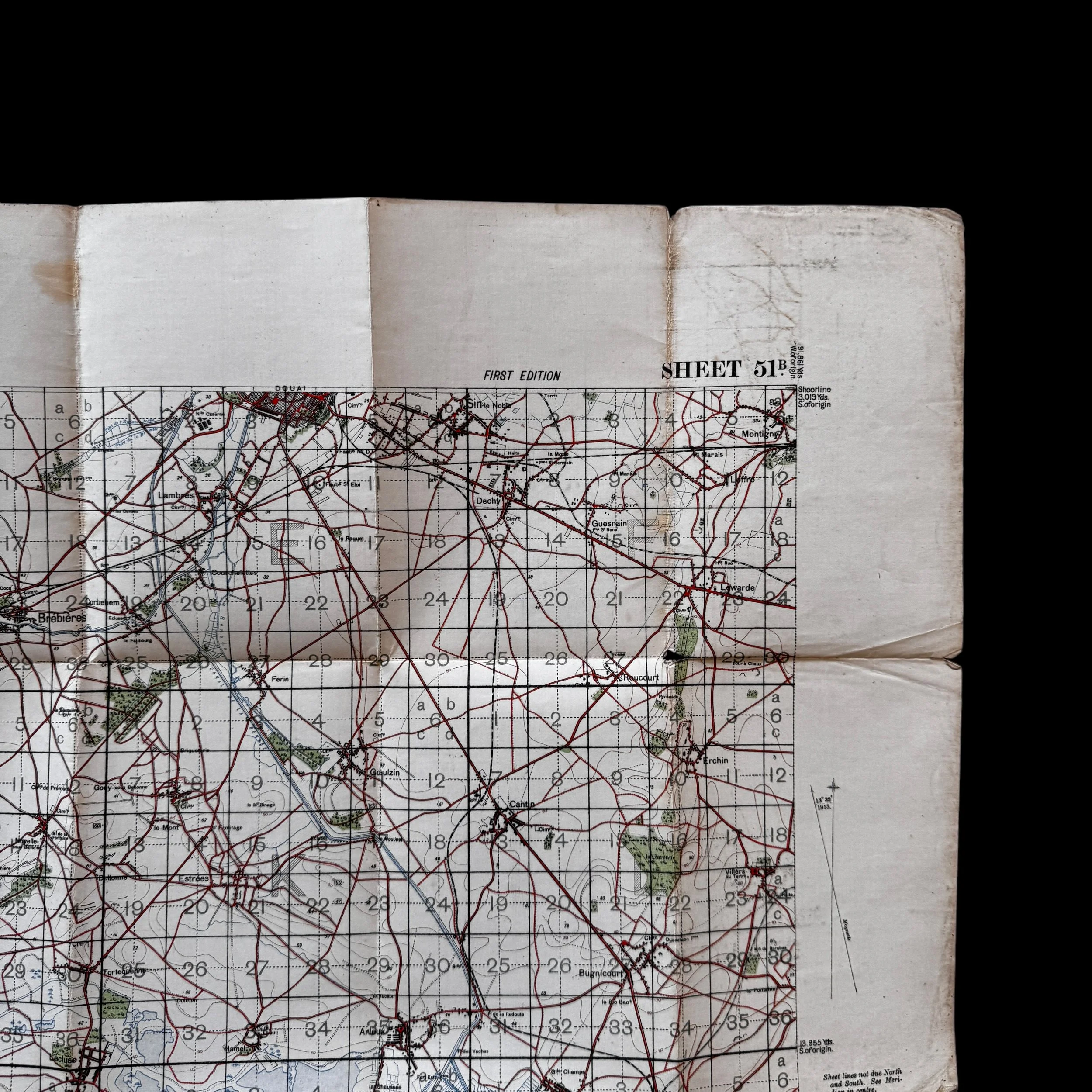
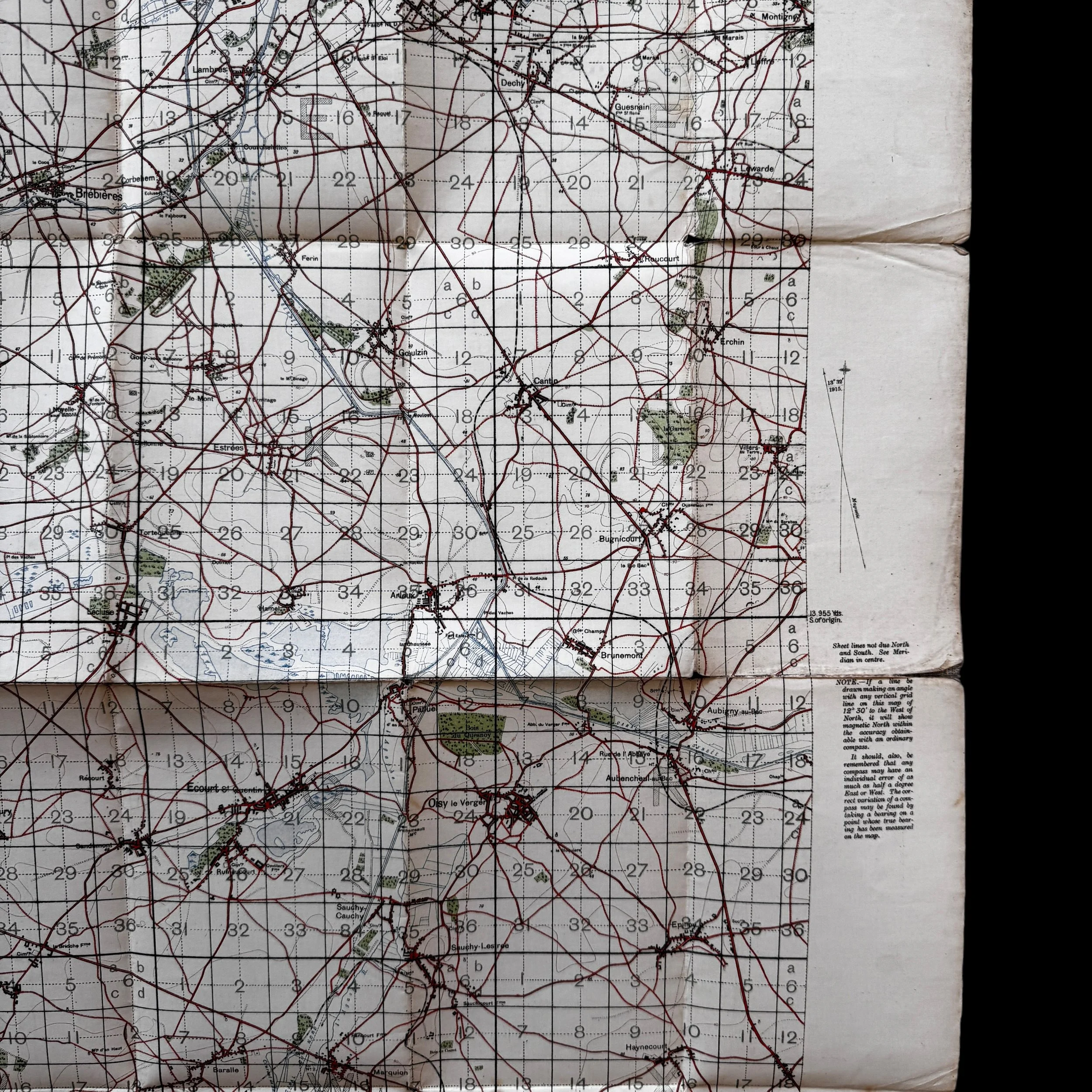
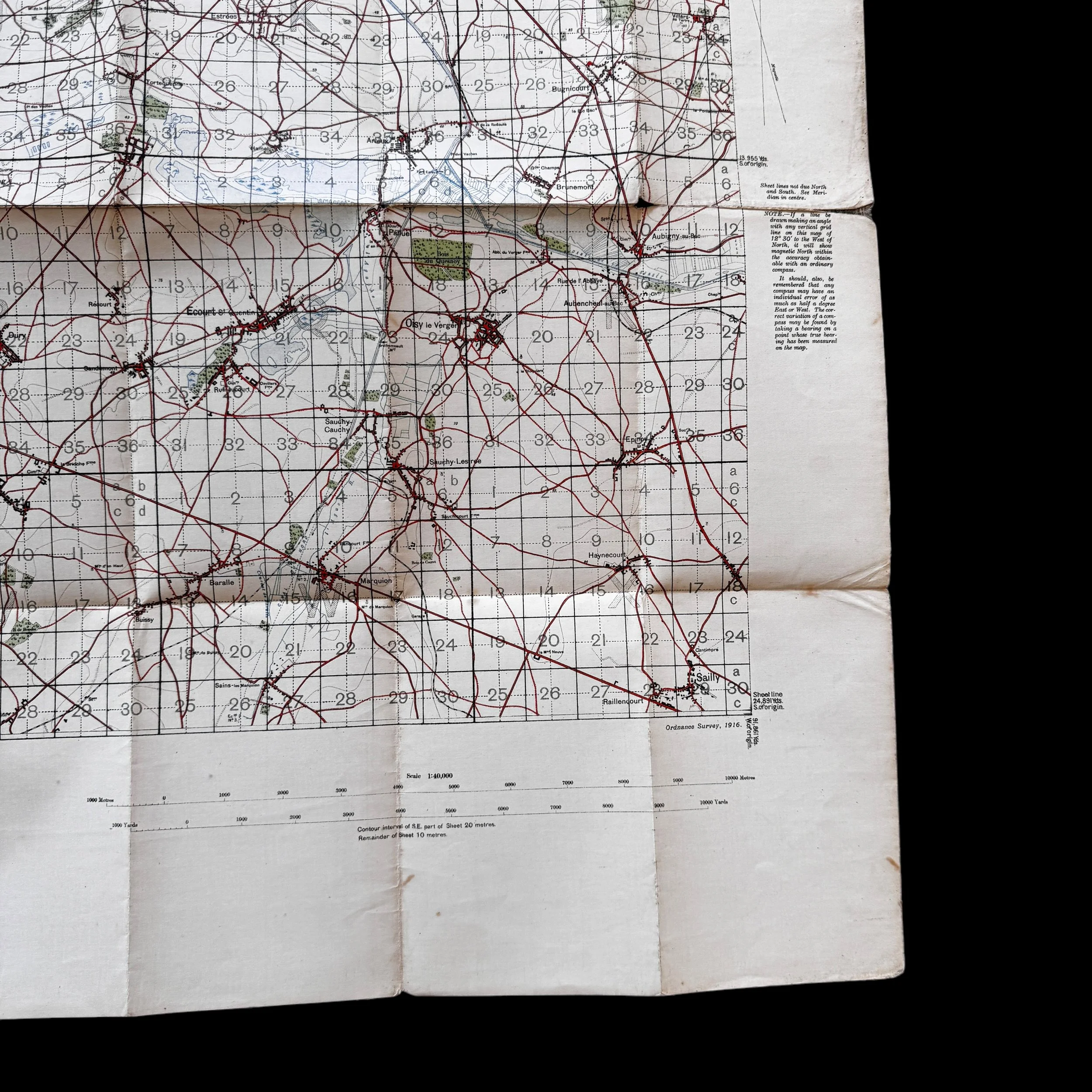

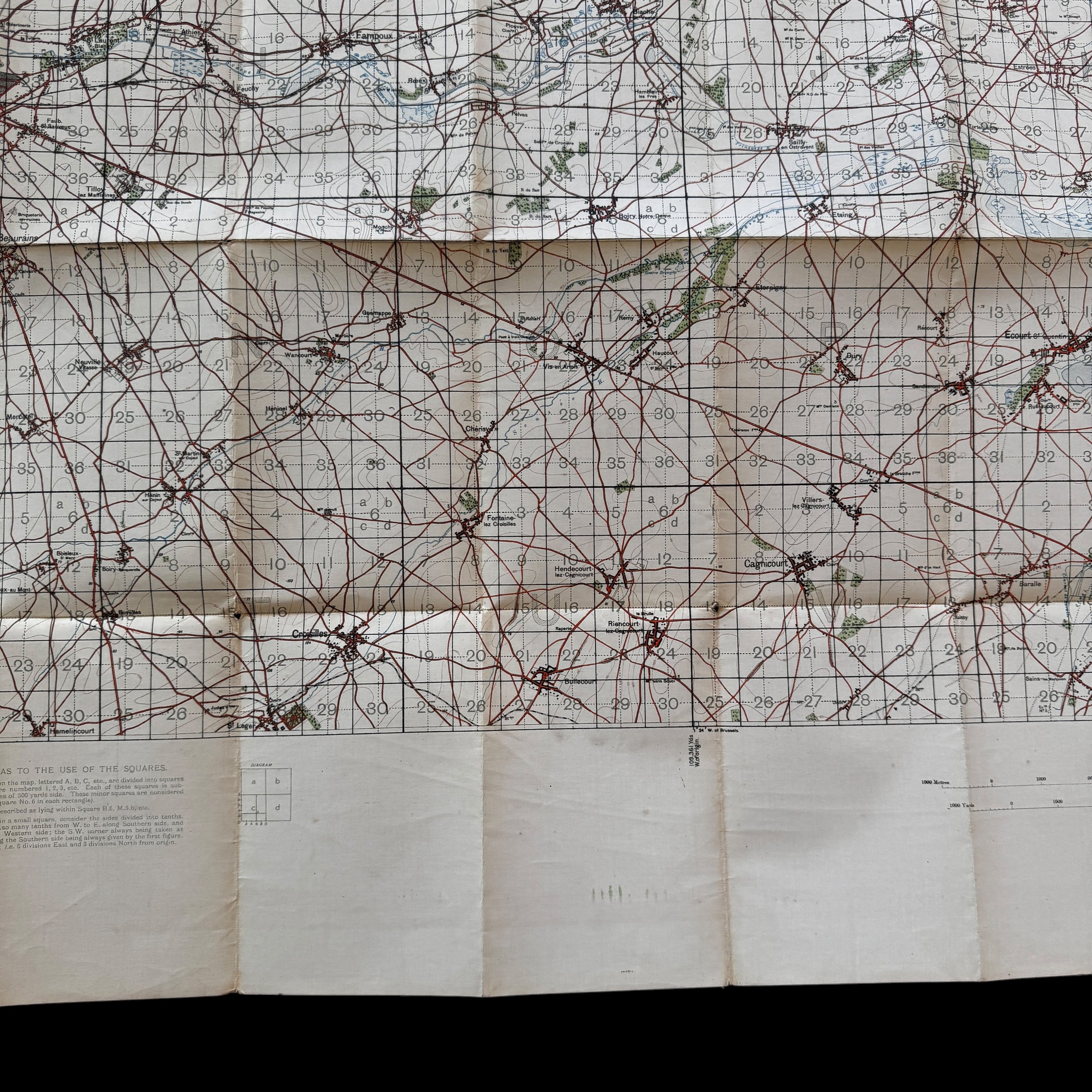
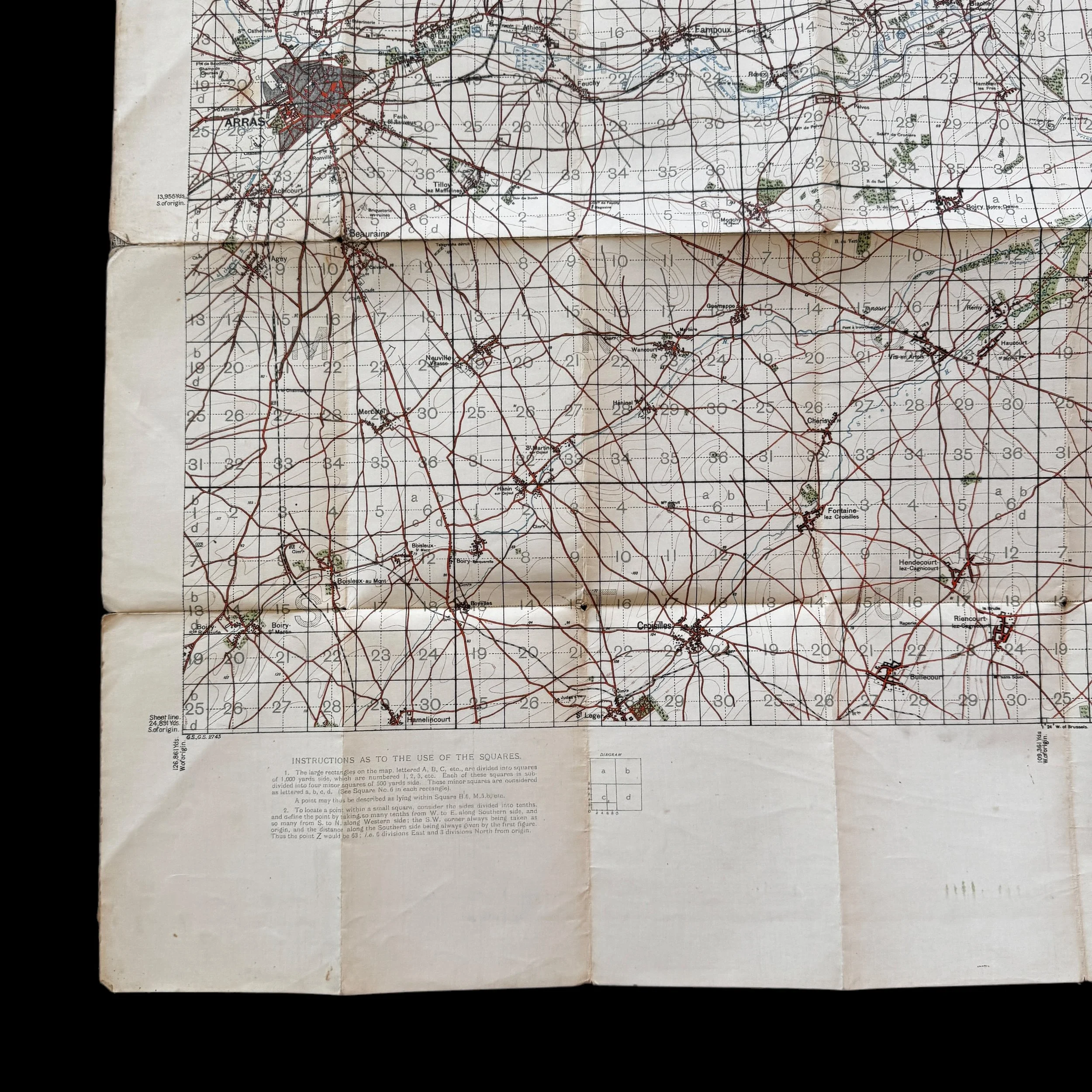

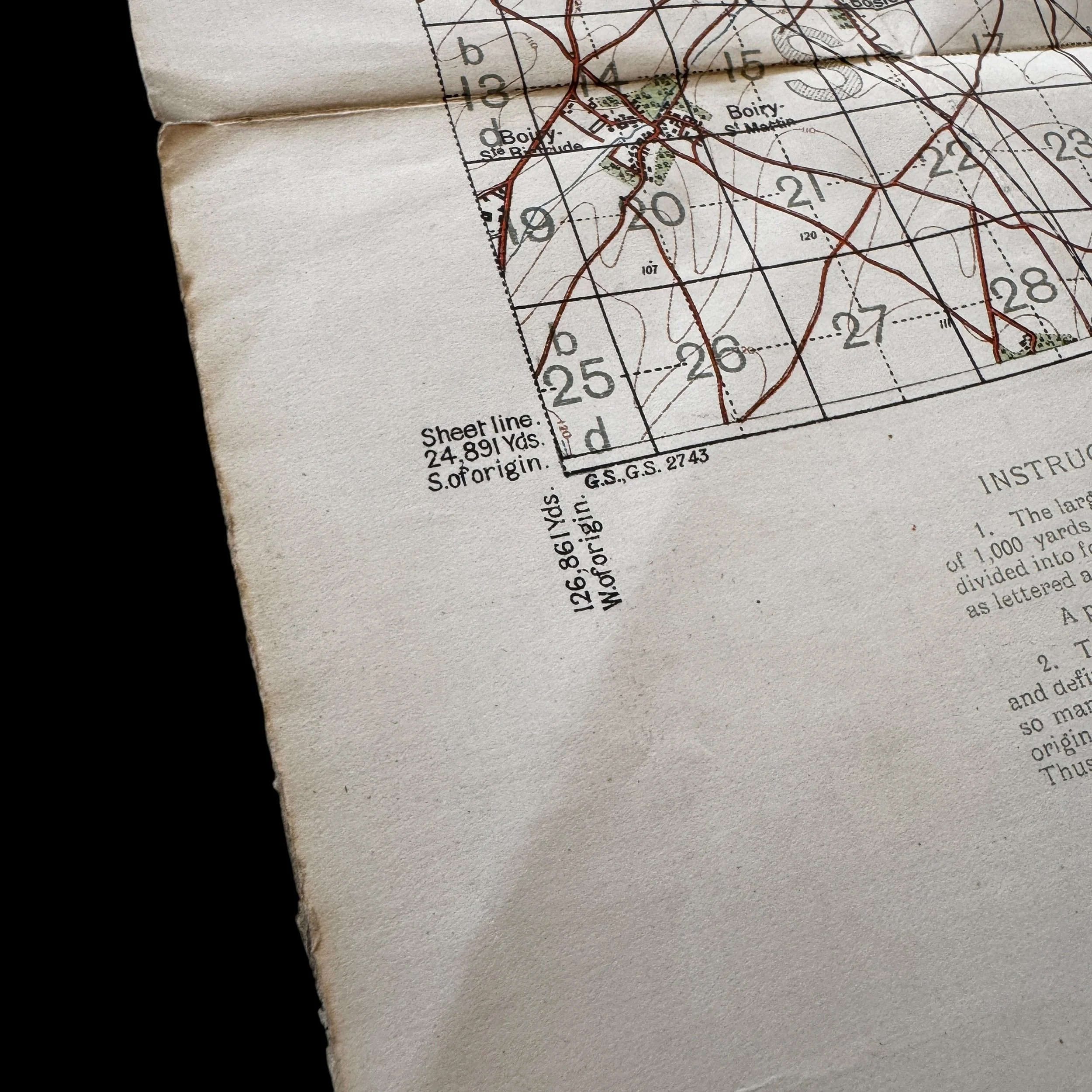
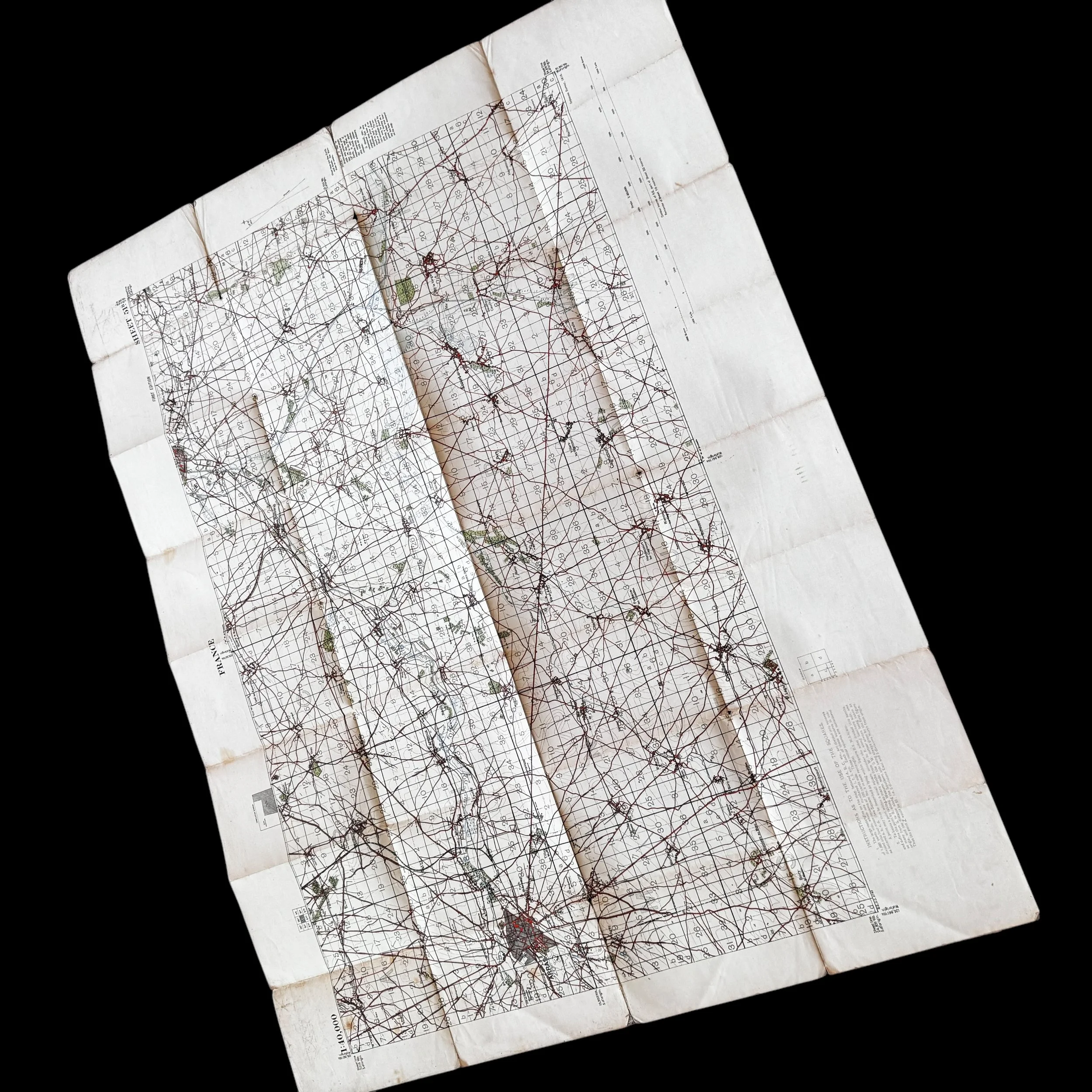
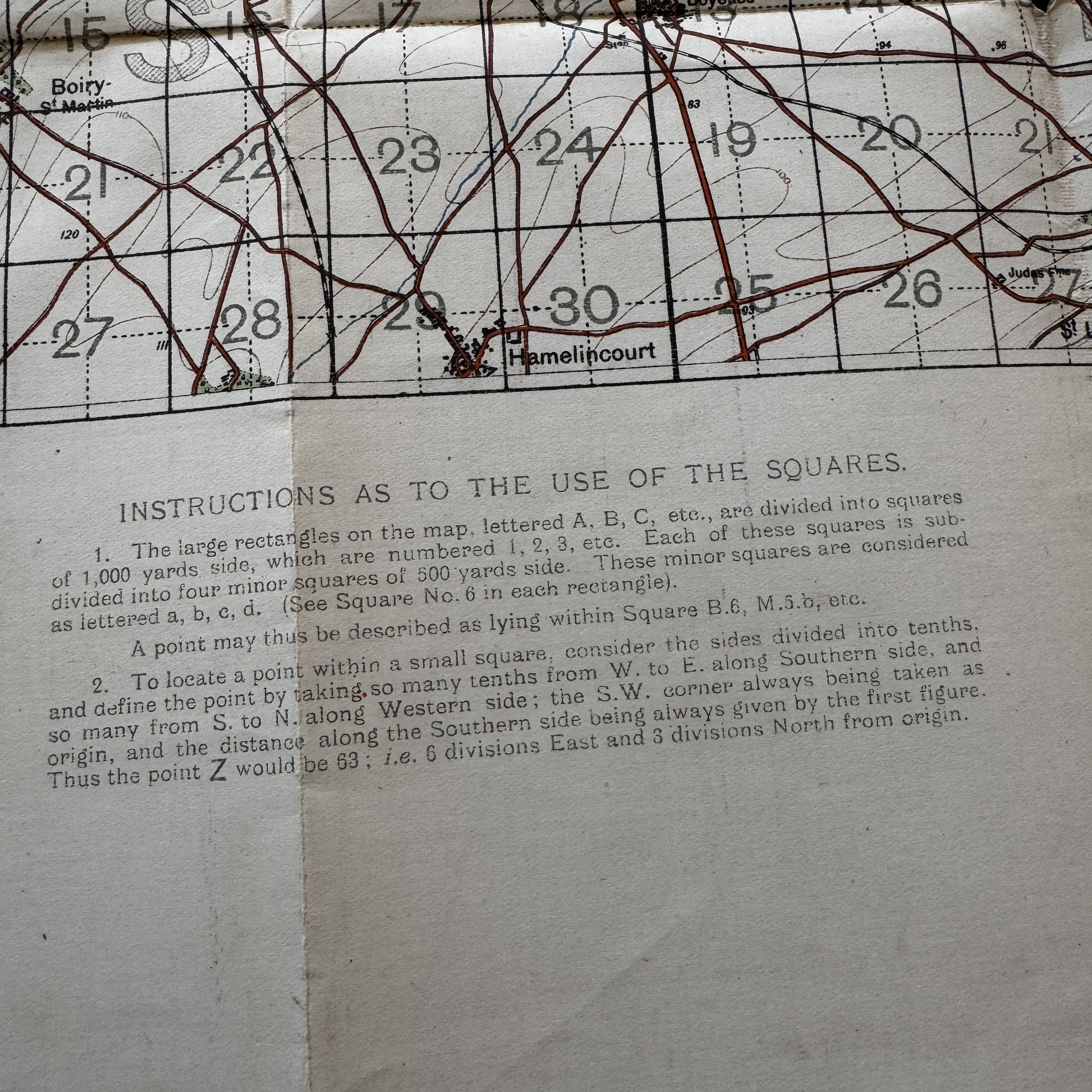

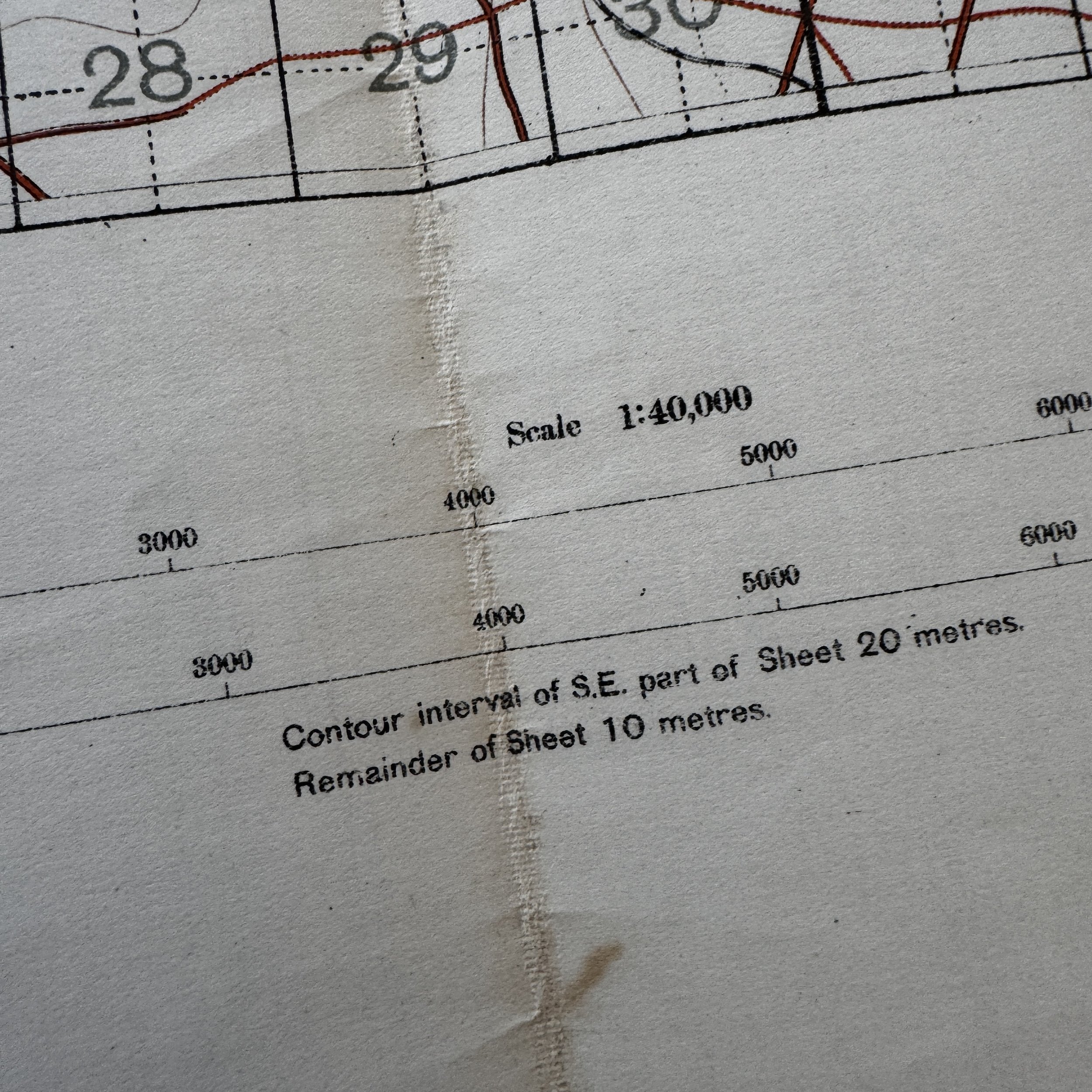
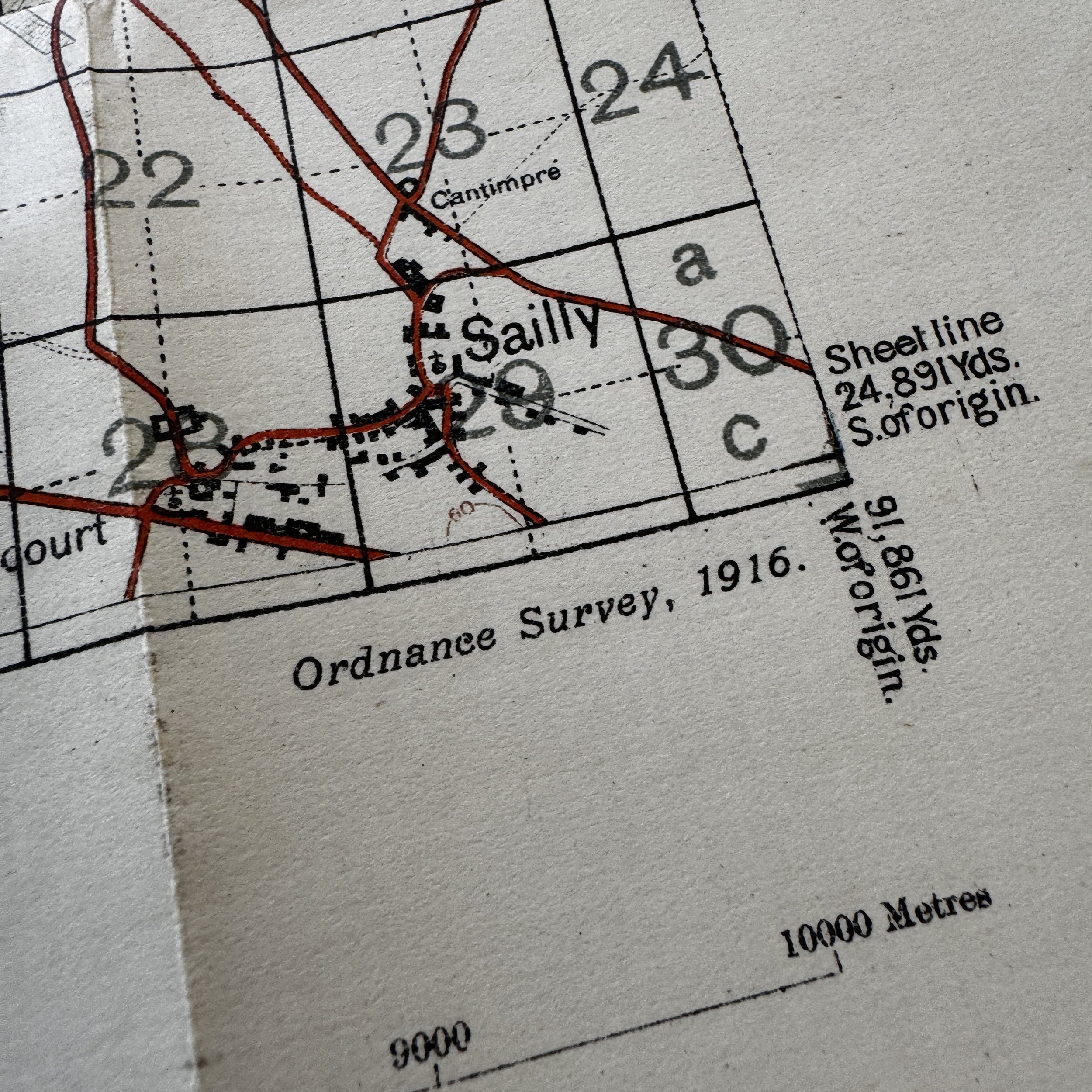




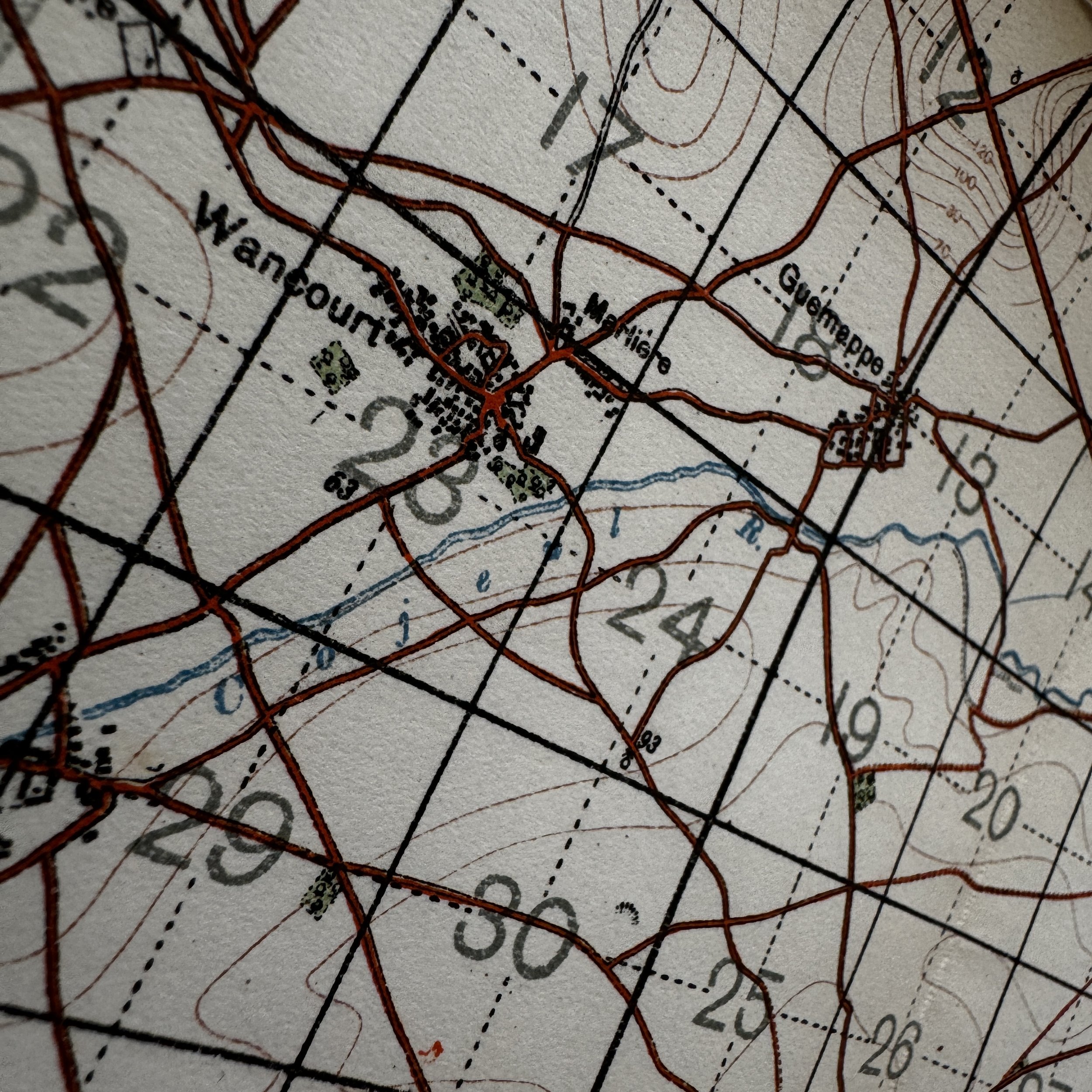


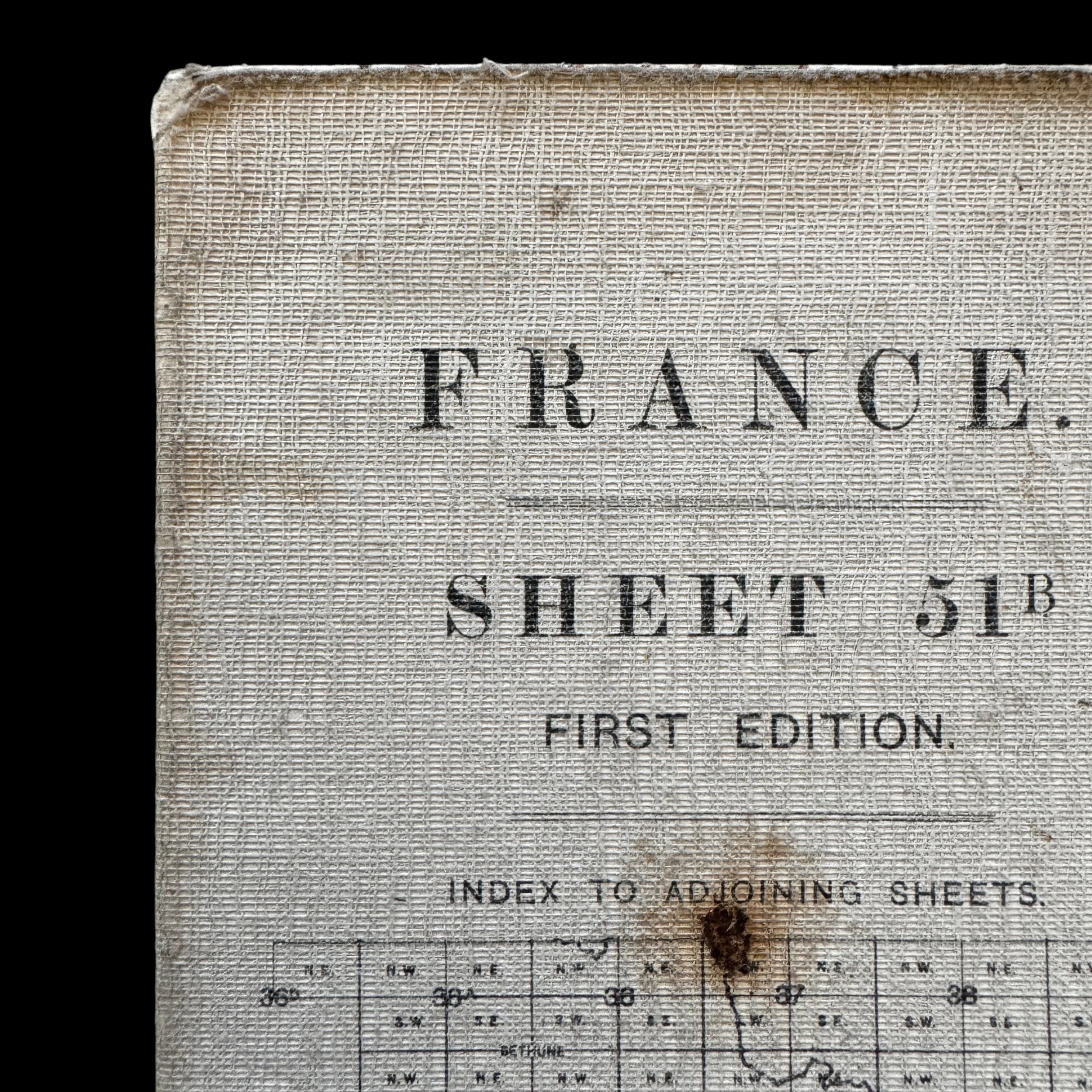
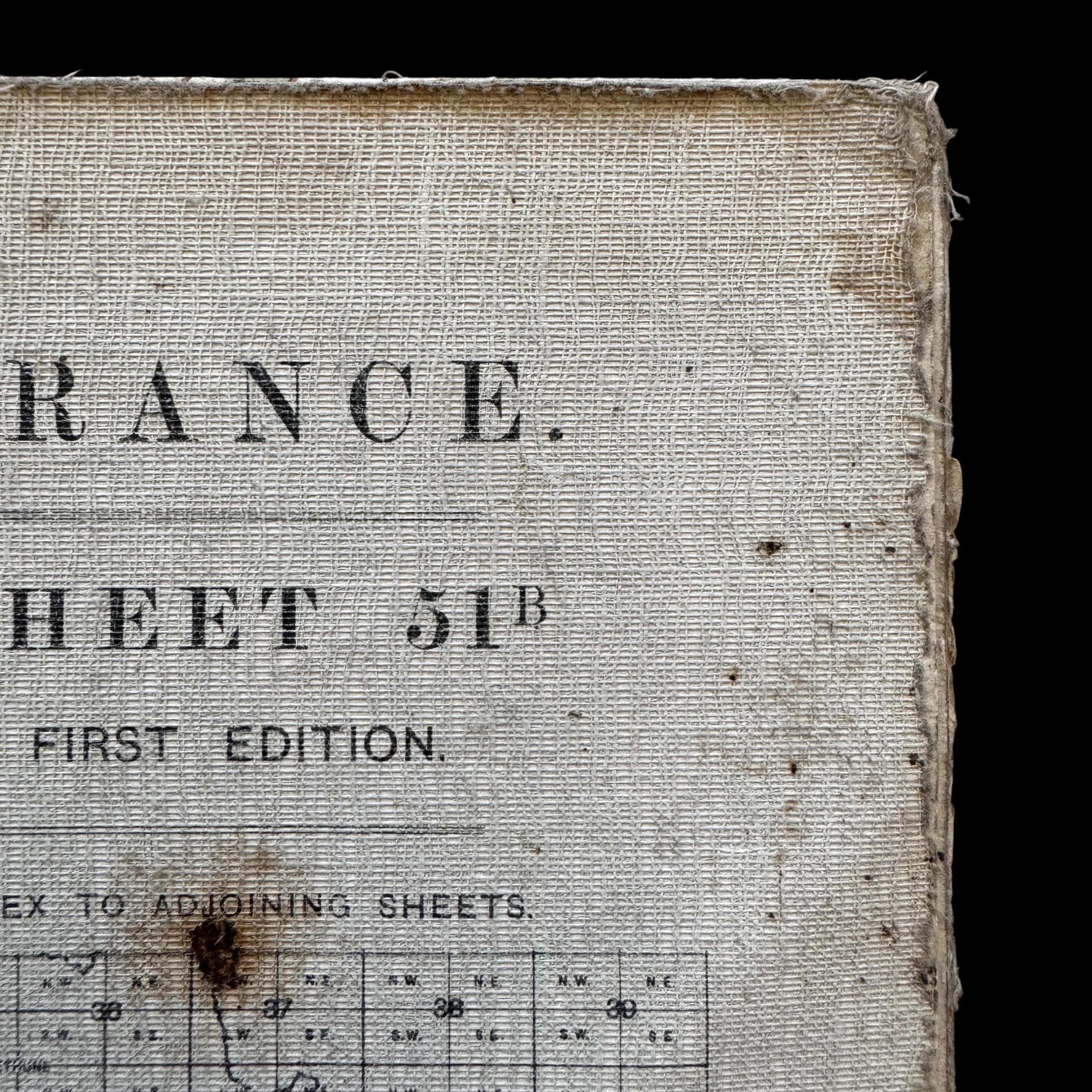
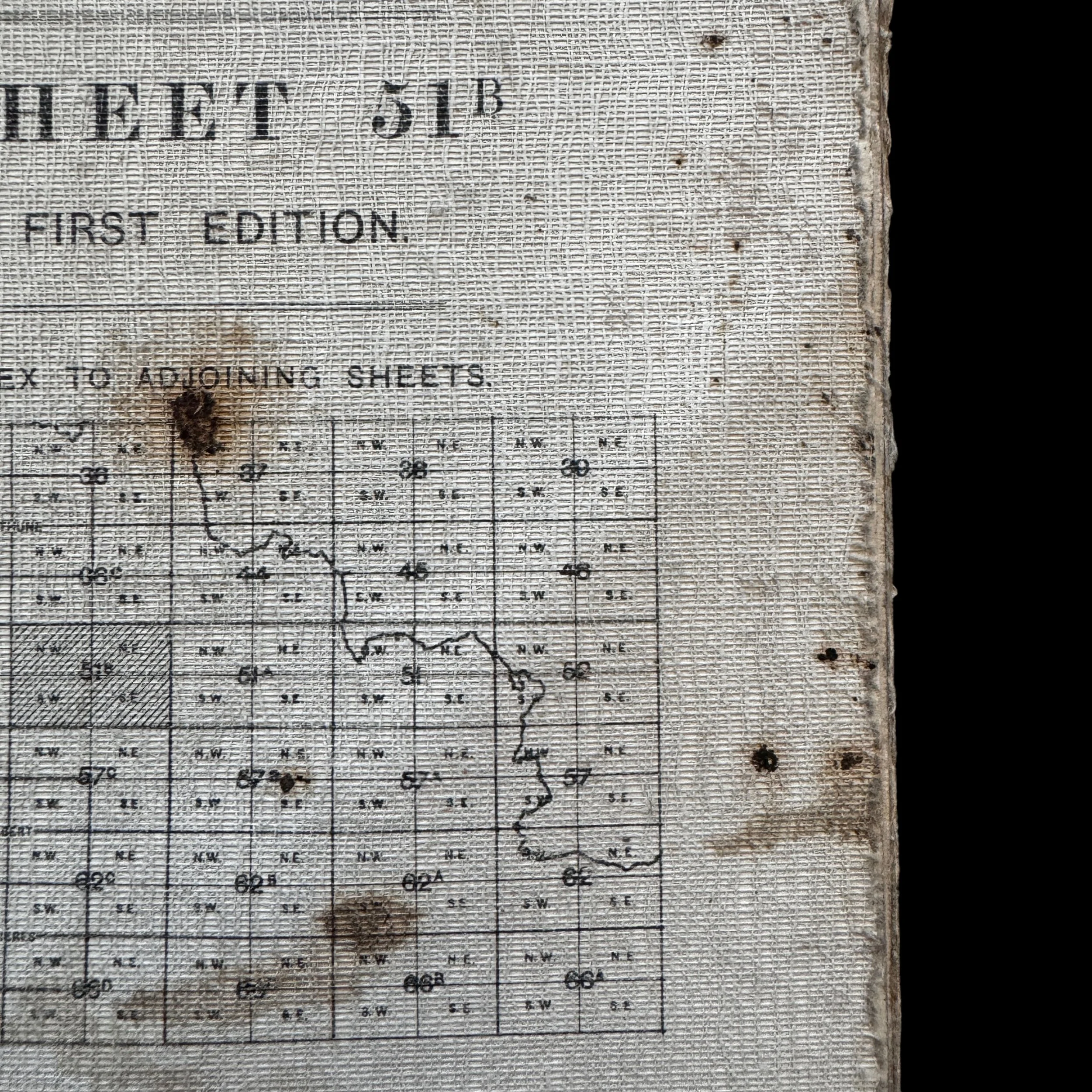
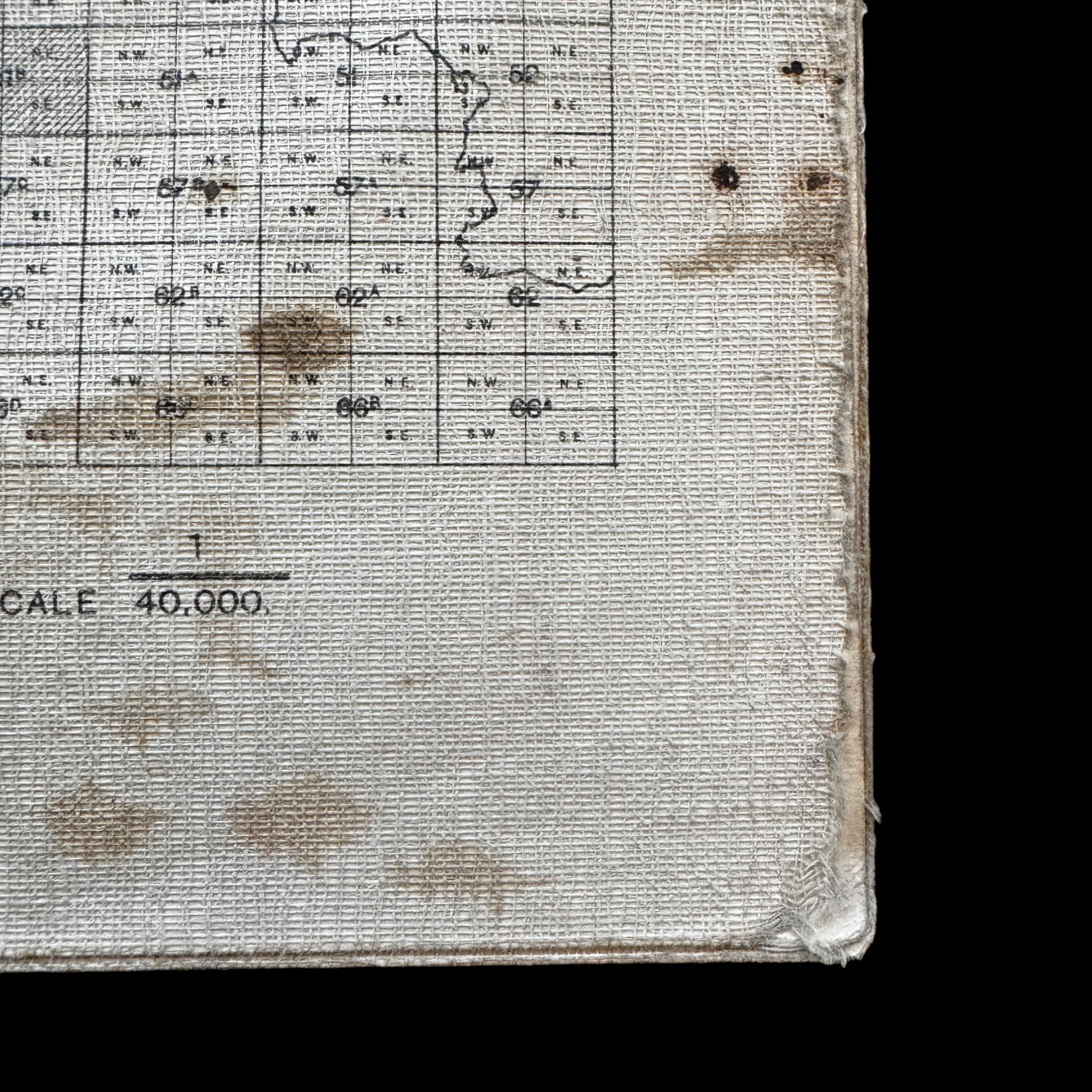
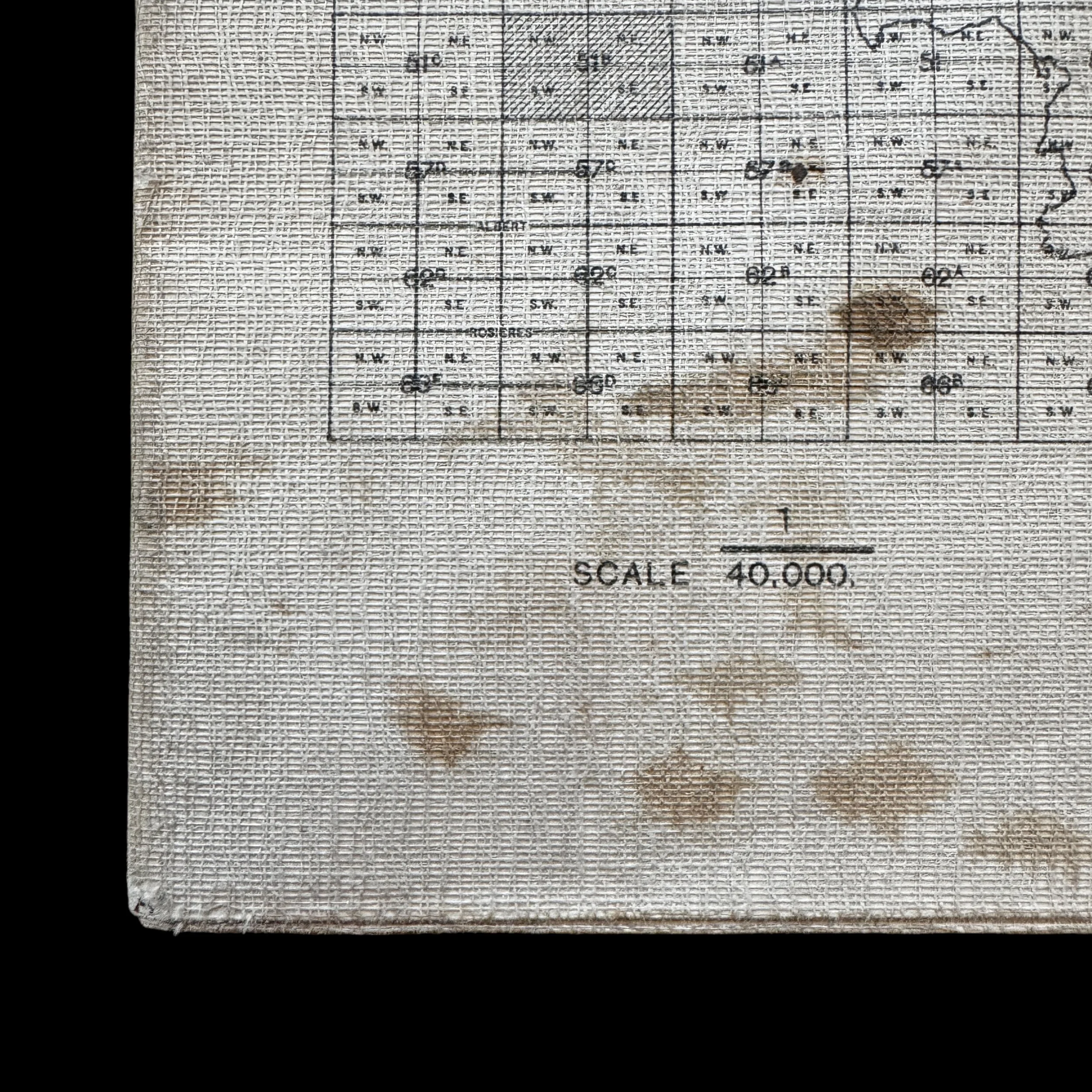
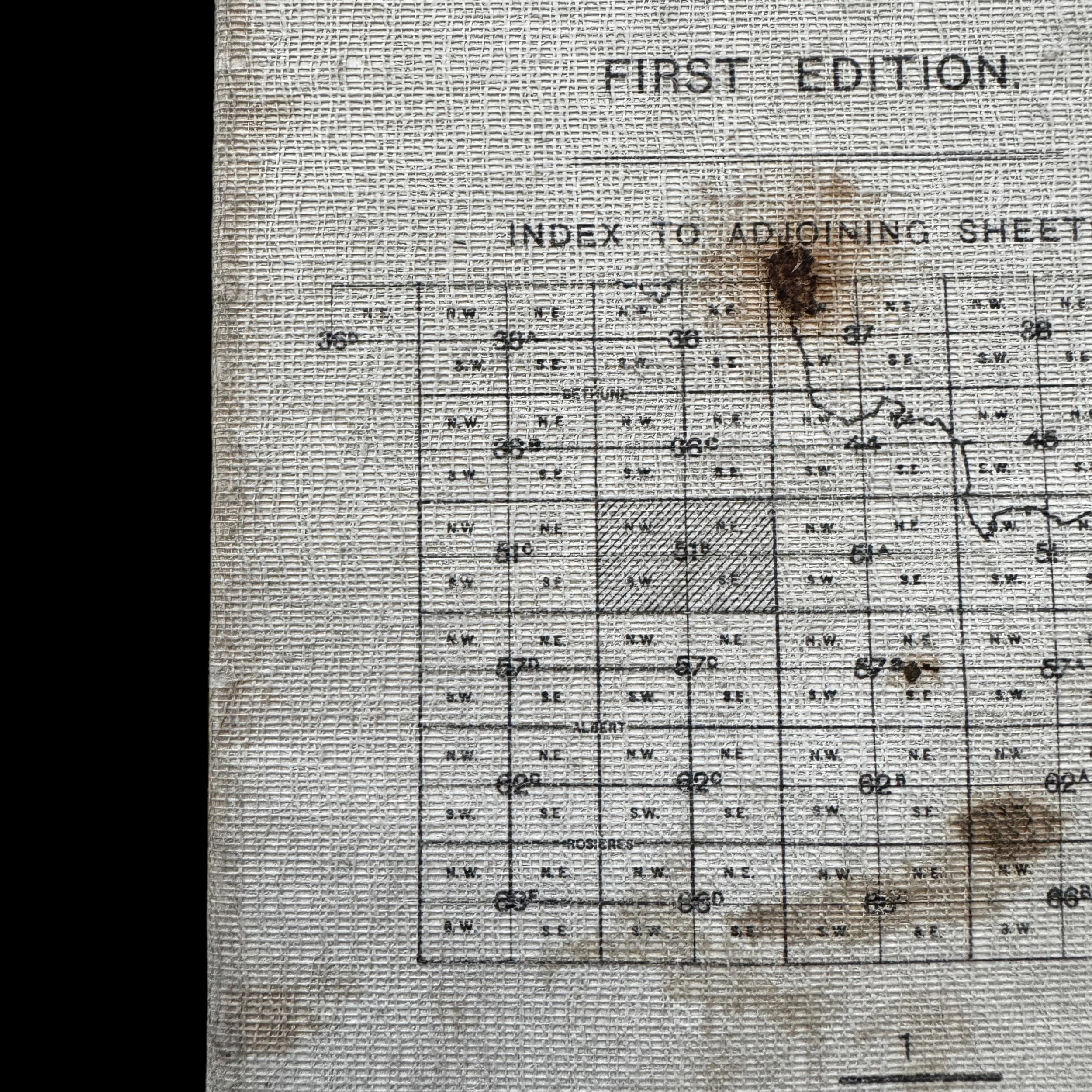

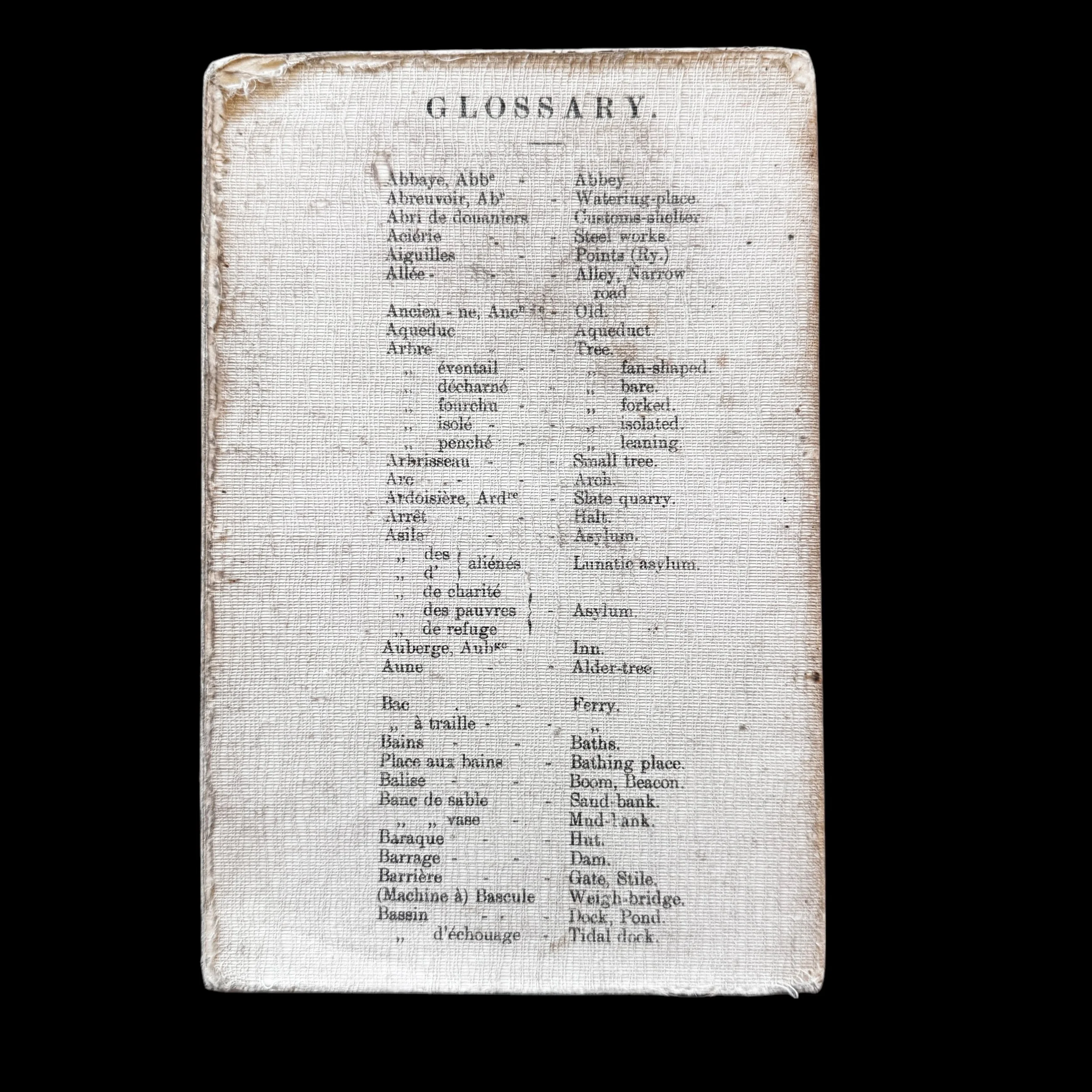
RARE! Original 1916 Battles of Arras British Expeditionary Force (B.E.F.) Battlefield Infantry & Artillery Combat Map
Comes with a hand-signed C.O.A.
Size: 27 × 35 inches
This extraordinarily rare, museum-grade World War I artifact is an original British Expeditionary Force (B.E.F.) battlefield map brought back from France. A true piece of wartime history, this First Edition map, dated 1916, was an essential tool for combat operations, meticulously designed to serve both as a combat infantry navigation map and an artillery firing grid map. It features an intricate square gridding system, allowing for precise coordination of troop movements, artillery barrages, and strategic positioning on the Western Front.
Maps of this nature were carried into battle by British, and Canadian Expeditionary Force soldiers, who relied on them daily to navigate the war-torn landscapes of France. Used in the trenches and command posts alike, these maps played a critical role in ensuring battlefield effectiveness, guiding troops through complex networks of fortifications, shell craters, and shifting frontlines.
Given the high rate of attrition and damage in the brutal conditions of World War I, surviving examples of these maps are exceptionally rare—most were heavily worn, destroyed in combat, or discarded after the war. This particular map represents a rare survivor of the Great War, an authentic and historically significant artifact that offers a tangible connection to the experiences of soldiers who fought in one of the most grueling conflicts in modern history.
An invaluable piece for serious collectors, historians, or museums, this map stands as a remarkable testament to the ingenuity, resilience, and strategic planning that defined the battlefields of World War I.
The Battles of Arras: Combat and Operations in Northern France (1916-1918):
The region around Arras, France, was a focal point of intense combat operations during the latter half of World War I. Situated in northern France, Arras became a vital strategic location due to its proximity to the Western Front and its significance as a transportation and logistical hub. Between 1916 and 1918, the region witnessed some of the war’s most significant battles, including the Battle of Arras in 1917 and the persistent trench warfare that defined much of the conflict. Arras held great military importance for both the Allies and the Germans. Its well-developed infrastructure made it a critical transportation hub, essential for moving troops, supplies, and reinforcements. The city's location also placed it near the heavily fortified German defensive positions, including the Hindenburg Line, making it a key target for Allied offensives. The high ground surrounding Arras, particularly Vimy Ridge, provided a commanding view of the battlefield, offering a significant advantage to whichever side controlled it.
Although the Battle of Arras would not take place until 1917, the fighting in 1916 was heavily influenced by the broader Battle of the Somme, which lasted from July to November of that year. The Somme Offensive, primarily conducted by the British and French, aimed to relieve pressure on the French forces at Verdun and break the German defenses. While Arras itself was not the main focus, the British launched diversionary attacks near the city to prevent German reinforcements from being diverted to the Somme. In response, the Germans heavily fortified their positions around Arras, leading to intense artillery bombardments and trench raids that shaped the battlefield for future offensives. By the end of 1916, neither side had achieved a decisive breakthrough, but the lessons learned from the Somme influenced the strategies that would be used in Arras the following year.
The Battle of Arras, launched by the British on April 9, 1917, was a major offensive designed to break through German lines and create an opportunity for a wider exploitation of enemy weaknesses. The attack began with a massive artillery barrage that lasted nearly a week, targeting German defenses along a 15-mile front. At dawn on April 9, British, Canadian, and Australian forces launched a coordinated infantry assault. One of the most significant moments of the battle was the Canadian Corps’ capture of Vimy Ridge, which had been heavily fortified by the Germans. Over four days, from April 9 to April 12, the Canadians successfully seized this critical high ground, giving the Allies a strategic advantage. Meanwhile, the British Third Army, led by General Sir Edmund Allenby, attacked eastward toward the Scarpe River. The early stages of the battle saw rapid advances, a rarity in trench warfare, as British forces moved several miles forward. The offensive incorporated new tactics, including creeping barrages, improved coordination between infantry and artillery, and the use of tunnels and underground shelters to surprise enemy positions.
Despite these early successes, the offensive began to slow by late April. The Germans had retreated to well-prepared defensive positions and launched counterattacks that inflicted heavy casualties on the advancing British forces. By May 1917, the battle had largely stalled. While the Allies had captured key ground, including Vimy Ridge, they had not achieved a decisive breakthrough. The British suffered nearly 160,000 casualties, while German losses were estimated at around 125,000. Although the offensive did not lead to a complete collapse of the German front, it weakened their forces and set the stage for future Allied operations.
Following the Battle of Arras, the region remained a contested frontline. Throughout late 1917 and early 1918, both sides engaged in raiding operations, artillery duels, and positional warfare. In early 1918, the Germans launched Operation Michael, part of their larger Spring Offensive, in an attempt to break through Allied lines before American reinforcements arrived in full strength. While the main thrust of the offensive was further south, Arras and its surrounding areas saw intense fighting as the Germans attempted to disrupt British positions. However, British forces in the region held firm, preventing a full German breakthrough. The German offensive ultimately stalled due to overextended supply lines and stiff Allied resistance.
The final phase of the war saw the Allies launch the Hundred Days Offensive, beginning in August 1918. Arras played a key role in these operations as British and Canadian forces conducted coordinated attacks to push the Germans back. The Second Battle of Arras, fought from August 26 to September 3, 1918, marked a significant success, with the Allies breaking through German defenses and advancing eastward. This momentum continued, leading to the collapse of German defensive lines and ultimately contributing to the end of the war with the signing of the Armistice on November 11, 1918.
Between 1916 and 1918, Arras and its surrounding region witnessed some of the most critical battles of World War I. From the aftermath of the Somme to the large-scale British offensive in 1917 and the climactic struggles of 1918, the area remained a key strategic focal point. The Battle of Arras in 1917, though not a complete breakthrough, demonstrated the evolving nature of trench warfare and laid the groundwork for later successes. The defensive battles of 1918 further highlighted the resilience of British and Canadian forces, ultimately contributing to the war’s end. Today, Arras stands as a symbol of sacrifice and endurance, with memorials such as Vimy Ridge honoring those who fought and fell in one of the war’s most fiercely contested battlefields.